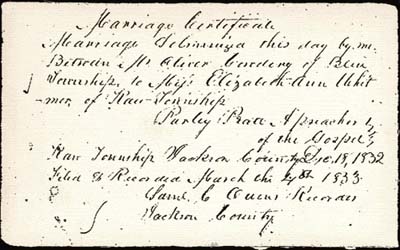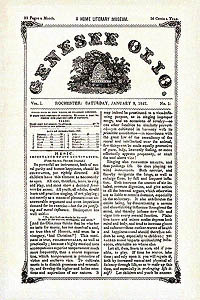
Cowdery Family Files: Cowdery Given Names and Biographical Sketches 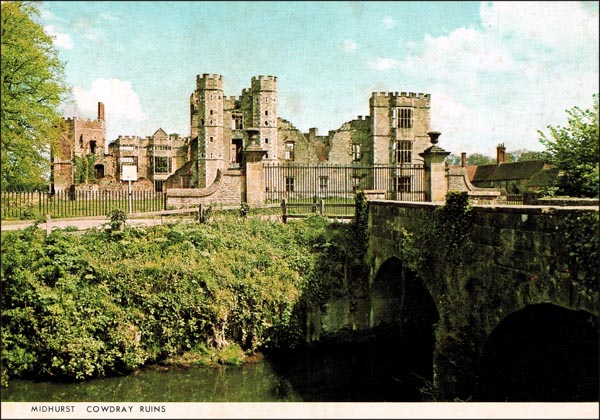
Genealogy | 9 Generation Report | Related Surnames | 1820-30 NY Census | Mehling excerpts |
|
Descendants of William Cowdery (1602-1687) Index of Cowdery Names |
||
|
Surname and Given Name |
Birth & Death |
Generation and Relationship to Oliver |
|
Cowdery Aaron " Abigail " Abigail " Abigail " Achsah R. " Adeline Fuller " Albert Augustus " Albert R. " Alice Lucette " Alice M. " Alma E. " Almarine " Almira " Almon " Almon " Almon Nelson " Almy " Alva Rosalie " Ambrose " Ambrose Hutchens III " Ambrose Hutchens IIII " Ambrose Hutchens jr. " Ambrose Sr. " Ann " Anna Elizabeth " Ansel jr. " Ansel Sr. " Anthony W. " Arthur Howard " Arthur Purple " Arthur R. " Asa Aldrich " Asa III " Asa jr. " Asa Sr. " Asahel " Athelrida Almira " Augusta " Augustina " Azubah Cowdery Benjamin R. " Bethia " Betsey Cowdery Calvin " Caroline Eliza " Charles Beckwith " Charles C. " Charles Clark " Charles Frederick " Charles H. " Charlotte " Chauncey S. " Chloe " Chloe " Clarence Clayton " Cynthia " Cynthia " Cyrenia " Cyrus " Cyrus Cowdery Damon " Daniel jr. " Daniel Sr. " David " David " David " David Wickham " Demaris " Desdemonia " Diadamia " Dolly " Dorothy " Dorothy " Dorothy " Dudley " Dyar Lamotte " Dyer Cowdery Edith Aldrich " Edmund " Edward " Edward Jr. " Edward Sr. " Eleanor C. " Elihu " Elihu " Elijah Coe " Eliza " Elizabeth " Elizabeth " Elizabeth " Elizabeth Ann " Emily J. " Erastus " Esther " Ethan " Eunice " Ezra " Ezra Lorian Cowdery Fanny " Frank Marcellus " Frederick Cowdery George " George " George Franklin " George Holmes " George Livingstone " George Willis " Gilbert " Grace Patience Cowdery Hannah " Hannah " Hannah " Hannah Adelia " Harriet " Harriet " Harriet E. " Harriet Marie " Helen Mar " Henry " Hiram " Huldah " Huldah Cowdery Isaac " Isaac " Isaac III " Isaac Jerome " Isaac jr. " Isaac Sr. Cowdery Jabez " Jabez Jr. " Jabez Sr. " Jacob " Jacob " Jacob A. " Jacob Edwin " Jacob M. jr. " Jacob Sr. " James " James Cornish " Jay William " Jeanette " Jerusha " Jerusha " Joanna " Joel Ensley " Joel Jr. " Joel Sr. " John " John " John " John Fitch " John Quincy " John Simmonds " Jonathan " Jonathan " Josephine Rebecca " Joshua " Josiah Simpson " Julia Olive " Julina Cowdery Kate " Kitty Cowdery Laura " Laura " Lester " Lester Coe " Lester L. jr. " Lester L. Sr. " Lester Leander " Lester Leander " Lewis S. " Linus " Lorenzo Dow " Lovica " Lucy " Lucy " Lucy " Lucy Pearce " Lucyna or Lusina " Luther " Lydia " Lydia " Lydia 1 " Lydia 2 " Lydia T. " Lyman " Lyman (W.?) " Lyman Emmett " Lyman Hervey " Lyman P. " Lyman W. Cowdery Marcellus F. " Maria Louise " Martha " Martha " Martha " Martha Ann " Martha J. " Martha M. " Martius Dyar " Mary " Mary " Mary " Mary " Mary A. " Mary F. " Mary M. " Mary O. " Mathias " Mathias " Mehitabel " Mehitabel " Melancthon " Melancthon Collins " Melissa " Meribah " Mildred C. " Millicent " Millie " Milo G. " Molly " Moses Jr. " Moses Sr. " Myranda B. Cowdery Nancy " Nancy " Nathaniel " Nathaniel jr. " Nathaniel Jr. " Nathaniel jr. " Nathaniel sr. " Nathaniel Sr. " Nathaniel Sr. " Nelson Almon " Nelson Ethan jr. " Nelson Ethan Sr. Cowdery Olive " Olive " Olive " OLIVER " Oliver Peter " Oliver Pliny " Orpha Cowdery Penelope " Phebe L. " Phelps " Philo " Polly " Polly " Prudence Cowdery Rebecca " Rebecca Marie " Rosetta M. " Roswell 1 " Roswell 2 " Roxanna E. " Rufus " Ruth " Ruth " Ruth " Ruth A. Cowdery Sally " Sally " Sally " Sally " Samantha " Samantha " Samuel Jr. " Samuel Sr. " Sarah " Sarah " Sarah (Sally) " Sarah E. " Sophia " Sophia " Sophia Amanda " Squire B. " Stephen Fuller " Stillula " Susanna Cowdery Temperance " Temperance " Thomas " Thomas 1 " Thomas 2 " Thomas 3 Cowdery Vesta Cowdery Warren A. " Warren Franklin " Warren Hervey " William " William " William " William " William " William Henry " William Jr. " William Squire " William Sr. Cowdery Zachariah " Zeruah M. |
1777 1792 1797 c. 1831 1807 1844 1853 1843 1844 1849 1843 1848 1819 1787 c. 1810 1826 1805 1864 1841 c. 1813 c. 1844 1784 1762 1807 1848 1813 1776 1841 1861 1849 1838 1828 c. 1832 1798 1758 1783 1832 1849 c. 1832 1756 1847 1643 1794 1796 1844 1813 c. 1830 1812 1848 1850 1841 1824 1776 1812 1865 1809 1823 1847 1794 1813 1785 1811 1774 c. 1789 1811 1845 1811 1768 1798 1768 1817 1763 1774 1801 1813 1833 1793 1872 c. 1732 c. 1858 1803 1760 1829 1782 c. 1791 1808 1807 1659 1770 c. 1826 1836 1839 1796 1764 1788 1788 1766 1824 1795 1859 c. 1856 1788 1820 1835 1857 1819 1824 1811 1855 c. 1645 1763 1770 1817 c. 1830 1850 c. 1843 1851 1827 c. 1850 c. 1805 1733 1776 1772 1822 1793 1808 1760 c. 1730 1796 1771 1741 1799 1804 1847 1837 1762 c. 1738 1785 1826 1831 1837 1783 c. 1809 1673 c. 1834 1799 c. 1768 c. 1787 1799 1806 1814 1839 1839 1720 1767 1838 1794 1835 1846 c. 1816 1861 c. 1766 1845 c. 1863 c. 1815 1807 1854 1798 1821 c. 1848 1846 1792 c. 1824 1827 1780 1800 1811 1814 1788 1784 1757 1800 1724 1736 1836 1809 1802 1836 1826 1828 1789 1815 1835 1693 1768 1808 1839 1852 1825 1819 1668 1689 1689 1812 c. 1843 1821 c. 1842 1823 1641 1679 1735 1763 c. 1828 1839 c. 1817 1764 1844 1786 1791 1844 1764 1773 1731 1814 1802 1811 1793 1661 1719 1759 1639 1691 c. 1733 c. 1820 1843 1818 1767 1805 1759 1806 1840 1827 1798 1778 1817 c. 1811 1805 1783 1796 c. 1772 1663 1810 1834 1795 1797 1835 1826 1687 1773 1815 1837 c. 1785 1785 1799 1800 c. 1828 1855 1695 1657 1761 1806 1794 c. 1835 1790 1802 1831 1764 1791 1786 1676 1796 1821 1786 1726 1729 1732 1800 1788 c. 1819 1853 1602 1665 1815 c. 1824 1840 1841 1765 1815 1737 1769 1835 |
? - not in main line 7 - 2nd cousin 7 - 2nd cousin 8 - 2nd cousin - 1 gen rem. 7 - 2nd cousin 8 - daughter 8 - half-cousin - 1 gen rem. 9 - 2nd cousin - 2 gen rem. 8 - 2nd cousin - 1 gen rem. 9 - 2nd cousin - 2 gen rem. 8 - 2nd cousin - 1 gen rem. 8 - 2nd cousin - 1 gen rem. 8 - 2nd cousin - 1 gen rem. 7 - 2nd cousin 8 - 2nd cousin - 1 gen rem. 8 - 2nd cousin - 1 gen rem. 7 - 2nd cousin 8 - 2nd cousin - 1 gen rem. 9 - 2nd cousin - 2 gen rem. 8 - 2nd cousin - 1 gen rem. 9 - 2nd cousin - 2 gen rem. 7 - 2nd cousin 6 - cousin 1 gen. rem. 7 - half-cousin 9 - great neice 7 - half-cousin 6 - half-Uncle (paternal) 9 - 2nd cousin - 2 gen rem. 9 - great nephew 9 - 2nd cousin - 2 gen rem. 8 - 2nd cousin - 1 gen rem. 8 - 2nd cousin - 1 gen rem. 8 - 2nd cousin - 1 gen rem. 7 - 2nd cousin 6 - cousin 1 gen. rem. 7 - 2nd cousin 7 - half-cousin 9 - 2nd cousin - 2 gen rem. 8 - neice 6 - cousin 1 gen. rem. 9 - 2nd cousin - 2 gen rem. 2 - g-g-g- Grandaunt (paternal) ? - not in main line 7 - 2nd cousin 8 - half-cousin - 1 gen rem. 7 - 2nd cousin 8 - nephew ? - not in main line 8 - half-cousin - 1 gen rem. 9 - 2nd cousin - 2 gen rem. 8 - 2nd cousin - 1 gen rem. 8 - 2nd cousin - 1 gen rem. 6 - cousin 1 gen. rem. 7 - 2nd cousin 9 - great nephew 7 - half-cousin 8 - 2nd cousin - 1 gen rem. 8 - 2nd cousin - 1 gen rem. 7 - 2nd cousin 8 - 2nd cousin - 1 gen rem. 7 - 2nd cousin 7 - half-cousin 6 - half-Uncle (paternal) 7 - 2nd cousin 7 - half-cousin 9 - 2nd cousin - 2 gen rem. 7 - 2nd cousin 6 - cousin 1 gen. rem. 7 - 2nd cousin 6 - Aunt (paternal) 7 - half-cousin 6 - Aunt (paternal) 6 - cousin 1 gen. rem. 7 - 2nd cousin 7 - half-cousin 8 - nephew 7 - Brother (elder) 9 - great neice 5 - Great Uncle (paternal) 8 - 2nd cousin - 1 gen rem. 7 - 2nd cousin 6 - cousin 1 gen. rem. 8 - neice 6 - cousin 1 gen. rem. 7 - 2nd cousin 8 - 2nd cousin - 1 gen rem. 7 - 2nd cousin 3 - g-g- Grandaunt (paternal) 6 - cousin 1 gen. rem. 8 - neice 8 - daughter 8 - 2nd cousin - 1 gen rem. 7 - Brother (elder) ? - not in main line 7 - 2nd cousin ? - not in main line ? - not in main line 8 - 2nd cousin - 1 gen rem. 7 - 2nd cousin 9 - great nephew 8 - 2nd cousin - 1 gen rem. ? - not in main line 8 - 2nd cousin - 1 gen rem. 9 - 2nd cousin - 2 gen rem. 9 - great nephew 7 - 2nd cousin 8 - 2nd cousin - 1 gen rem. 8 - 2nd cousin - 1 gen rem. 9 - great neice 2 - g-g-g- Grandaunt (paternal) 6 - Aunt (paternal) ? - not in main line 7 - 2nd cousin 8 - 2nd cousin - 1 gen rem. 8 - 2nd cousin - 1 gen rem. 9 - 2nd cousin - 2 gen rem. 9 - great neice 8 - neice 9 - 2nd cousin - 2 gen rem. 7 - 2nd cousin 5 - Great Aunt (paternal) 6 - cousin 1 gen. rem. ? - not in main line 8 - 2nd cousin - 1 gen rem. ? - not in main line 7 - half-cousin ? - not in main line ? - not in main line 7 - 2nd cousin 6 - cousin 1 gen. rem. 5 - Great Uncle (paternal) 7 - 2nd cousin 7 - 2nd cousin 9 - 2nd cousin - 2 gen rem. 8 - 2nd cousin - 1 gen rem. 6 - cousin 1 gen. rem. 5 - Great Uncle (paternal) 7 - 2nd cousin 8 - 2nd cousin - 1 gen rem. 8 - nephew 9 - 2nd cousin - 2 gen rem. ? - not in main line 7 - 2nd cousin 3 - g-g- Grandaunt (paternal) 8 - 2nd cousin - 1 gen rem. 7 - 2nd cousin 6 - cousin 1 gen. rem. 7 - 2nd cousin 6 - cousin 1 gen. rem. 7 - 2nd cousin 7 - 2nd cousin 7 - half-cousin 8 - nephew 5 - Great Uncle (paternal) 6 - cousin 1 gen. rem. 8 - daughter ? - not in main line 8 - 2nd cousin - 1 gen rem. 8 - daughter 7 - 2nd cousin 8 - 2nd cousin - 1 gen rem. 6 - cousin 1 gen. rem. 9 - great neice 9 - great neice 7 - 2nd cousin 8 - 2nd cousin - 1 gen rem. 8 - 2nd cousin - 1 gen rem. 7 - 2nd cousin 8 - 2nd cousin - 1 gen rem. 9 - 2nd cousin - 2 gen rem. 9 - 2nd cousin - 2 gen rem. 7 - 2nd cousin 8 - 2nd cousin - 1 gen rem. 8 - 2nd cousin - 1 gen rem. 6 - cousin 1 gen. rem. 7 - 2nd cousin 7 - 2nd cousin 7 - half-Sister (younger) 7 - 2nd cousin 7 - 2nd cousin 6 - cousin 1 gen. rem. 7 - 2nd cousin 5 - Great Aunt (paternal) 5 - Great Aunt (paternal) 8 - 2nd cousin - 1 gen rem. 7 - half-cousin 7 - Brother (elder) 8 - nephew 8 - nephew 8 - 2nd cousin - 1 gen rem. 7 - 2nd cousin 8 - nephew 8 - daughter 4 - g- Grandaunt (paternal) 6 - cousin 1 gen. rem. 7 - 2nd cousin 9 - 2nd cousin - 2 gen rem. 8 - 2nd cousin - 1 gen rem. 8 - neice 8 - nephew 3 - g-g- Grandaunt (paternal) 4 - g- Grandaunt (paternal) 4 - cousin 3 gen. rem. 7 - 2nd cousin 8 - 2nd cousin - 1 gen rem. 7 - 2nd cousin 9 - 2nd cousin - 2 gen rem. 8 - neice 2 - g-g-g- Granduncle (paternal) 3 - g-g- Granduncle (paternal) 5 - Great Aunt (paternal) 6 - cousin 1 gen. rem. 8 - nephew 9 - 2nd cousin - 2 gen rem. 7 - 2nd cousin ? - not in main line 8 - 2nd cousin - 1 gen rem. 7 - 2nd cousin 7 - 2nd cousin 9 - 2nd cousin - 2 gen rem. 6 - Aunt (paternal) 6 - cousin 1 gen. rem. 5 - Great Uncle (paternal) 8 - 2nd cousin - 1 gen rem. 7 - 2nd cousin 8 - 2nd cousin - 1 gen rem. 7 - 2nd cousin 3 - g-g- Granduncle (paternal) 5 - Great Uncle (paternal) ? - not in main line 2 - g-g-g- Grandfather (paternal) 4 - g- Grandfather (paternal) ? - not in main line 8 - (son of Erastus?) 9 - 2nd cousin - 2 gen rem. 8 - 2nd cousin - 1 gen rem. 6 - Aunt (paternal) 7 - Sister (elder) 6 - cousin 1 gen. rem. 7 - Self + Wife 8 - Oliver's only son 8 - nephew 7 - 2nd cousin 6 - cousin 1 gen. rem. 7 - half-Sister (younger) 7 - 2nd cousin 7 - 2nd cousin ? - not in main line 7 - 2nd cousin 6 - half-Aunt (paternal) 3 - g-g- Granduncle (paternal) 7 - half-Sister (younger) 7 - half-cousin 7 - 2nd cousin 7 - 2nd cousin 7 - half-cousin 8 - 2nd cousin - 1 gen rem. 4 - g- Grandaunt (paternal) 6 - cousin 1 gen. rem. 7 - 2nd cousin 7 - half-cousin 7 - 2nd cousin ? - not in main line 7 - Sister (elder) 7 - 2nd cousin 8 - 2nd cousin - 1 gen rem. 9 - 2nd cousin - 2 gen rem. 4 - g- Granduncle (paternal) 3 - g-g- Grandfather (paternal) ? - not in main line 7 - 2nd cousin 7 - 2nd cousin 8 - neice ? - not in main line 7 - 2nd cousin 8 - neice 6 - cousin 1 gen. rem. 7 - Brother (elder) 6 - cousin 1 gen. rem. 3 - g-g- Grandaunt (paternal) 7 - 2nd cousin 8 - 2nd cousin - 1 gen rem. ? - not in main line 5 - Great Uncle (paternal) 5 - Great Uncle (paternal) 5 - Great Uncle (paternal) 7 - 2nd cousin 7 - Brother (elder) 8 - nephew 9 - great nephew 1 - g-g-g-g- Grandfather (pat.) 3 - g-g- Granduncle (paternal) 7 - half-cousin 8 - nephew 7 - half-cousin 8 - half-cousin - 1 gen rem. 6 - Father 8 - 2nd cousin - 1 gen rem. 5 - Grandfather (paternal) 6 - cousin 1 gen. rem. 8 - 2nd cousin - 1 gen rem. |
Excerpts from Mary A. Mehling's 1911
Cowdrey-Cowdery-Cowdray Genealogy
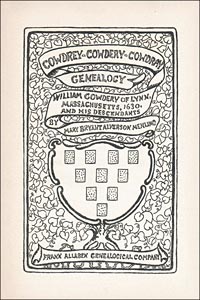
NYC: Frank Allaben Genealogical Co., 1911
John Cowdery (1700-1835) | Oliver Cowdery | Franklin Cowdery | Maps: 1 2
|
[152] 44 JOHN6 COWDREY, JR. (John,5 Samuel, Jr.,4 Samuel,3 Nathaniel,2 William1), b. Nov. 5, 1757, at Hartford, Conn.; m. May 2, 1808, to Christina Thompson, b. Mch. 12, 1775, dau. of Judge William and Mary (DeKay) Thompson of Goshen, Orange Co., N. Y. He d. Jan. 27, 1835, at 85 Liberty St., New York City. Children of John, Jr., and Mary: 111 i Maria Louisa, b. Apr. 4, 1809. 112 ii Sarah Eliza, h. Aug. 5, 1810. 113 iii William Thompson, b. Nov. 17, 1812. All bapt. by Rev. Mr. Powell. 114 iv Frances De Peyster, b. Sept. 26, 1813. 115 v John, 3rd, b. Mch. 25, 1815. Last two bapt. Sept. 6, 1818, by Rev. Mr. Cabel. Colonel John Cowdrey was born in Hartford, Conn., but while yet an infant removed to Boston, where his boyhood was spent. His life was uneventful until the breaking out of the Revolutionary War, when he seems to have become fired by military enthusiasm. His first exploit while a youth was in 1773, in assisting in destroying and throwing overboard the tea in Boston Harbor. On the 19th of April, 1775, he stood shoulder to shoulder with the heroes of Lexington. He was captured and confined in Boston ten days, when, on the 29th of April, he was permitted to cross the line. Although only 17 years old at the time he seized the first opportunity offered him and enlisted on the 5th of May at Roxbury, in Colonel Graton's Regiment, in Captain William's Company, General Ward, Commandant. He enlisted in the Drum Corps, and in June received a warrant from General Ward appointing him Drum Major (Conn. Men in the Revolution), a position he held until the Regiment was ordered to Cam bridge and from there to Bunker Hill, and after the battle of Breeds Hill went into winter quarters. He with a part of the Regiment lay in tents on Pierpont at Roxbury, remaining there [153] throughout the whole of the winter, which was very severe, the snow lying on the ground to depth of five feet until April. The British left Boston on the. 17th of March, and all who had recovered from the smallpox were ordered to march. John Cowdrey was ordered by General Knox to guide Lieutenant Hooker and thirty men to Fort Hill, where they remained until the Regiment was ordered to New York. They embarked at New London, in a fleet of thirty or forty vessels, and landed at New York April 5th, 1776. They were ordered into Barracks at the "Battery" and remained there until Graton's Regiment was ordered North. Owing to sickness and inability to bear the fatigue of the march, John Cowdrey was transferred to Henry Knox's Regiment, Captain Morton's Company of Artillery, as a, private. He remained with that Regiment until the evacuation, when he was ordered over to New Jersey. He remained at Fort Lee and Fort Washington until the Fleet went up the North River, when he was ordered to White Plains with heavy ordinance. He was in the action through the day, being intrusted with the charge of the baggage of the Regiment. At two o'clock in the morning he was sent with a dispatch to the Governor at Hartford for more troops. He made the trip of ninety-six miles in twelve hours, and owing to the fatigue of the journey was taken sick on his arrival at Hartford, and remained there until the army removed to New Jersey. In June, 1777, he joined the command under General Arnold at Stillwater, as a drill officer in General Poor's Brigade. On the 19th of April he received. two wounds and was sent to the hospital at Albany. At the expiration of three months he was discharged from the hospital. While yet under the care of Dr. Graham, he was sent to Hartford with some British prisoners, where he remained until the summer of 1778, when he joined Crane's Brigade at Rhode Island. He was in the retreat through New Jersey. after which he went to West Point. At Westchester, in 1779, he was made prisoner, [154] sent to New York, and confined in the Sugar House for nine months. He was exchanged by Colonel Ledgard and sent to Smith's Cove. He then enlisted as Officer of Marines on board the Brig "Trumble," mounting twelve guns forward, CQmmanded by Stephen Buckley, who was a deranged officer of artillery. After cruising about for three or four months the "Trumble" was chased by a fifty gun ship, and ran ashore at a place called "Lacage," on the southern coast of Long Island, where they lost all. Cowdrey was lurking in the woods for ten days while the British tars lay at Southold. He succeeded in getting to Seabrook, and was requested by Colonel Willis to raise a company of Artillery, and was commissioned a Lieutenant under Captain Mallox. At Wethersfield, where George Washington and the French General held a council, he was given command of the guard, but Washington being called away, he was sent with word from him, to. Arnold. In the winter he went with Colonel Lamb in a sleigh to Springfield, where he helped in laying out the Laboratory. He returned in about three weeks to West Point and spent the winter at Continental Village, Westchester Co., and at Nelsons Point. In 1781 he marched to Verplanks Point, and spent the summer there. In 1782 he left the Point and went into winter quarters at Snake Hill, Newberry, Orange Co., N. Y., and remained with that company until the army disbanded in 1783. In 1791 was appointed Colonel of a Militia Regiment in Ontario County, N. Y., from whence his popular title of "Colonel" was derived. In 1797 was appointed Major of the regiment of Militia, County Steuben. In 1808 he married Christina Thompson. In 1810 he was appointed Brigade Inspector in the Counties of Orange and Rockland, New York. In 1812 he was appointed Captain of the State Prison Guard of the city of New York, and continued to hold that position for a period of twelve years. On June 10, 1818, he applied for a pension, being entitled to it according to an act of Congress entitled "An Act to [155] provide for certain persons engaged in Land and Naval Service of the United States in the Revolutionary War," approved March 18, 1818, but owing to some defects in the testimony in the case, and the negligence of the persons who had the matter in charge, he did not receive it until some years later. During several years after the war, he followed the profession of an Instructor in Military Science, and taught the principles of that important branch of education to many hundreds of the most respectable citizens in the southern counties in the State of New York. He then retired to a farm in the Western part of New York State, but that employment proving too laborious for his declining years and strength, he settled in New York City, his pension and other income being sufficient for his comfortable support. In every situation in life he enjoyed the esteem and respect of his fellow citizens. But it was only in the more retired and select circles that his mind and heart were fully known, and there in the latter years o.f his life he was recognized as a sincere believer in the truth of the Christian religion. His last illness was protracted and severe, but he was enabled by grace to look beyond and triumph over its temporary pains, and to contemplate the approach of death with Christian composure. He died in the full possession of his understanding; his last expressions were that he was "at peace with all men" and that the great question of his happiness in the future state had long since been settled between himself and his Creator, upon the ground of the atonement and the hopes and promises of the Gospel. His remains, at his particular request, were taken to. Goshen, Orange Co., and deposited in the family grounds of his father-in-law, Judge William Thompson. __________ Note 1: According to the 1876 History of Seneca County, New York, (pp. 82-83) "John Cowdry" moved to Waterloo township (then Junius) in "about 1818," onto a parcel of land first settled by Mr. B. W. Dobbin. According that that account, Mr. Cowdery erected a frame house on the east side of the lot, which he later "passed to one Wheeler, a Geneva storekeeper." If John held the office of "Captain of the State Prison Guard" in New York City, from 1812-1824, his last few years of that employment must have been of an honorary nature and not active service. Most likely John relocated to Waterloo, Seneca County, in 1820, after a brief stop over in Ovid (where his name was recorded for the 1820 census) in the same county. Note 2: John's residence on the Seneca River (in what is now East Geneva) was well documented by occasional notices in the newspapers of that region. His wife passed away in 1830 in the adjacent township of Junius and John appears (as still living in Waterloo with no spouse) on the census list for that same year. A 1904 publication listed John as having been a Revolutionary War veteran who lived in Fayette township. Since he resided on the border with Fayette he may have had associations with the old soldiers in that place. The Peter Whitmer, Sr. family lived about three miles south of John's Waterloo residence, all through the 1820s. Since Mr. Cowdery lived alongside the Seneca Turnpike, visitors traveling to the Whitmers from the west would have necessarily passed by his house. Elder Sidney Rigdon, who traveled from Ohio to the temporary residence of the Joseph Smith, Sr. family (in nearby Seneca Falls) at the end of 1830, almost certainly passed by John's house. See maps below: |
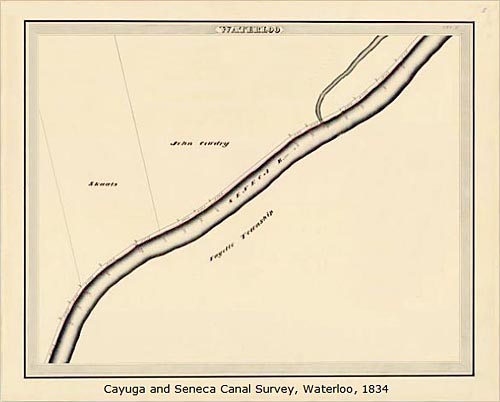
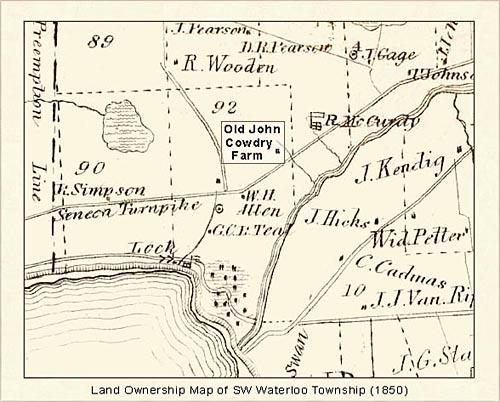
|
|
69 OLIVER7 COWDERY (William, Jr.,6 William,5 Nathaniel,4 Samuel,3 Nathaniel,2 William1), b. Oct. 3, 1806, at Wells, Rutland Co., Vt.; m. Dec. 18, 1832, in [173] Jackson Co., Mo., to Elizabeth Ann Whitmer, b. Jan 22, 1815, at Fayette, Seneca Co., N.Y.; dau. of Peter and Mary Whitmer. Residence (1887) South West City, Mo. He d. Mch. 3, 1850; was a teacher by profession; also practiced law. Children of Oliver and Elizabeth: i Marie Louise, b. Aug. 11, 1835, at Kirtland, Ohio; m. Sept. 7, 1856, at Richmond, Mo., to Dr. Chas. Johnson, b. June 24, 1826. Residence (1887) South West City, Mo. We are indebted to Mrs. Johnson for the dates in this record of Oliver's family. ii Elizabeth Ann, d. May 9, 1837, at Kirtland, Ohio, aged 5 mos., 25 days. iii Josephine Rebecca, d. Oct. 21, 1844, at Tiffin, Ohio, aged 6 years, 7 mos. iv Oliver Peter, d. Aug. 13, 1840, at Tiffin, aged 5 days. v Adline Fuller, d. Oct. 13, 1844, at Tiffin, Ohio, aged 15 days. vi Julia Olive, d. July 3, 1846, at Tiffin, Ohio, aged 1 mo., 6 days. Wherever Mormonism is mentioned in these days it is considered synonymous with polygamy -- a doctrine practiced and preached by the Mormons for nearly half a century. Let us then begin this article on the life of Oliver Cowderv by saying that at no time during his connection with Mormonism was polygamy openly proclaimed. That it was practiced by at least one of their leaders seems likely from the nature of the second charge brought against Oliver Cowdery at the time of his trial, as will appear later on. In founding and building up the Church of Latter Day Saints, Oliver Cowdery took a very prominent part. He had received a good education and supported himself by teaching school while pursuing his study of the law. To clearly understand and appreciate the conditions existing in rural communities in those days, one must remember there were no means for news to travel [174] rapidly. Possibly there was a weekly paper, published in some neighboring town, with extracts from a New York or Boston paper brought by boat or post rider; but there were no trains, nor telegrah; not even good roads. A trip to New York required more time and preparation, and excited more interest, than a tour of the world would today. The people were simple, hard-working country folk, many of them farmers, and it took all of their time and energy to obtain a bare living. It was in Palmyra, N. Y., and in such a community, during the winter of 1828-29, that Oliver Cowdery boarded with the parents of Joseph Smith, Jr., (afterward the "Prophet"). He was teaching at the village school and here he heard for the first time the story of the discovery of the golden plates. Young and impressionable (he was twenty-two at the time), this account interested him deeply and he sought out Joseph Smith, Jr., and became very intimate with him. It ended in his writing the Book of Mormon, from Joseph Smith's dictation, who said he was enabled to translate it by means of miraculous spectacles called the "Urim and Thummim." During the translation it was found in the book that there were to be three witnesses to its truth, and Oliver Cowdery, with David Whitmer and Martin Harris, were chosen... 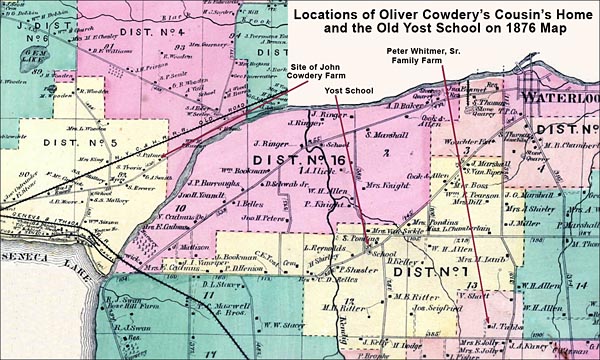
Waterloo/Fayette Border Region: Western Seneca County, NY (map not in original text) [175] 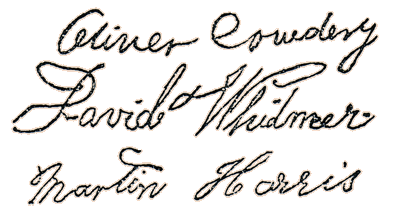
After writing the book, Oliver Cowdery made a second copy of it for the printers' use, and this is still in the possession of one of the descendants of David Whitmer, (Oliver Cowdery married David Whitmer's sister, and gave him this copy shortly before his death in 1850). The first copy was placed by Joseph Smith, with other papers, in the cornerstone of a Mormon house at Nauvoo, Illinois, in 1841, and when the building was torn down in 1883, most of the manuscript was badly damaged by exposure. Some pages [176] were saved, however... 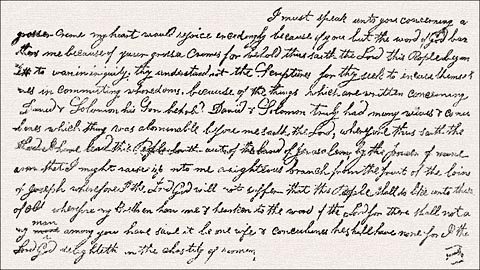
We also show a specimen of Oliver Cowdrey's writing, reproduced from the second copy of the Book of Mormon, made for the use of the printers, kept by Oliver Cowdrey, and by him delivered, shortly before his death, to David Whitmer. It seems to prohibit polygamy. The following text, including a little more than appears in the illustration, has been taken from the first printed edition of the Book of Mormon: "And were it not that I must speak unto you concerning a grosser crime, my heart would rejoice exceedingly, because of you. But the word of God burthens me because of vour grosser crimes. For behold. [177] thus saith the Lord : This People begin to wax in iniqnity; they understand not the Scriptures; for they seek to excuse themselves in committing whoredoms, because of the things which were written concerning David, and Solomon his Son. Behold, David and Solomon truly had many wives and concubines, which thing was abominable before me, saith the Lord. Wherefore, thus saith the Lord: I have led this people forth out of the land of Jerusalem, by the power of mine amr, that I might raise up unto me a righteous branch, from the fruit of the loins of Joseph. Wherefore, I the Lord God, will not suffer that this people shall do like unto them of old. Wherefore. my brethren hear me, and hearken to the word of the Lord: For there shall not any man among you have save it be one wife; and concubines he shall have none: For I, the Lord God, delighteth in the chastity of women. And whoredom is an abomination before me: thus saith the Lord of Hosts. Wherefore, this people shall keep my commandments, said the Lord of Hosts, or cursed be the land for their sakes. For if I will, saith the Lord of Hosts, raise up seed unto me, I will command my people: otherwise they shall hearken unto these things. For, behold, I, the Lord, have seen the sorrow, and heard the mourning of the daughter's of my people, in the land of Jerusalem, yea, and in all the lands of my people, because of the wickedness and abominations of their husbands. And I will not suffer, saith the Lord of Hosts, that the cries of the fair daughters of this people, which I have led out of the land of Jerusalem, shall come up unto me, against the men of my people, saith the Lord of Hosts, for they shall not lead away captive, the daughters of my people, because of their tenderness, save I shall visit them with a sore curse, even unto destruction: for they shall not commit whoredoms, like unto they of old, saith the Lord of Hosts." *From the beginning Oliver Cowdrey threw himself __________ *The Book of Mormon, printed by E. B. Grandin, 1830. Pages 126 and 127, Book of Jacob, chapter 11. [178] into the new cause with all the fervor of his nature. He was the first Mormon to be baptized, and it was at his hands that Joseph Smith received baptism. Also he was the first to preach a public discourse for his people. It was through his knowledge, energy and ability that the first edition of the Book of Mormon was published and sent out to the world. He was one of the first missionaries and made a trip to the Indians in the far west to tell them of the wonderful discovery of their origin as set forth in the Book of Mormon and to try to bring them into the fold. He was most kindly received and gravely listened to by these red brothers, but no large number of converts resulted. During the terrible persecution to which the Mormons were subjected in Missouri, and while Joseph Smith was forced to hide for fear of his life, dissensions and jealousies arose among his fellow members of the High Council, and charges were preferred against Oliver Oowdery by Seymour Brunson as follows: "To the Bishop and Council of the Church of Jesus Christ of Latter-day Saints, I prefer the following charges against President Oliver Cowdery: [179] his office as President of the Council, and by insulting the High Council with the contents of said letter. OLIVER COWDERY's REPLY
"Far West, Missouri, April 12, 1838.
"Dear Sir: -- I received your note of the 9th inst., on the day of its date,
containing a copy of nine charges preferred before yourself and Council
against me, by Elder Seymour Brunson.
"I could have wished that those charges might have been deferred until after my interview with President Smith; but as they are not, I must waive the anticipated pleasure, with which I had flattered myself, of an understanding on those points, which are grounds of different opinions on some Church regulations, and others which personally interest myself. "The fifth charge reads as follows: 'For selling his lands in Jackson County contrary to the revelations.' So much of this charge, 'for selling his lands in Jackson County,' I acknowledge to be true, and believe that a large majority of this Church have already spent their judgment on that act, and pronounced it sufficient to warrant a disfellowship; and also that you have concurred in its correctness, consequently, have no good reason for supposing you would give any decision contrary. "Now, sir, the lands in our country are allodial in the strictest construction of that term, and have not the least shadow of feudal tenures attached to them. [180] consequently, they may be disposed of by deeds of conveyance without the consent or even approbation of a superior. "The fourth charge is in the following words, 'For virtually denying the faith by declaring that he would not be governed by any ecclesiastical authority nor revelation whatever in his temporal affairs.' "With regard to this, I think I am warranted in saying, the judgment is also passed, as on the matter of the fifth charge, consequently, I have no disposition to contend with the Council; this charge covers simply the doctrine of the fifth, and if I were to be controlled by other than my own judgment, in a compulsory manner, in my temporal interests, of course, could not buy or sell without the consent of some real or supposed authority. Whether that clause contains the precise words, I am not certain -- I think however they were these: 'I will not be influenced, governed, or controlled, in my temporal interests by any ecclesiastical authority' or pretended revelation whatever, contrary, to my own judgment.' * Such being still my opinion, shall only remark that the three great principles of English liberty, as laid down in the books, are 'the right of personal security-, the right of personal liberty, and the right of private property.' My venerable ancestor was among the little band, who landed on the rocks of Plymouth in 1620 -- with him he brought those maxims, and a body of those laws which were the result and experience of many centuries, on the basis of which now stands our great and happy government; and they are so interwoven in my nature, have so long been inculcated into my mind by a liberal and intelligent ancestry that I am wholly unwilling to exchange them for anything less liberal, less benevolent, or less free. "The very principle of which I conceive to be couched in an attempt to set up a kind of petty government, controlled and dictated by ecclesiastical influence, in the midst of this national and state government __________ * This probably refers to his "insulting letter" mentioned above. [181] You will, no doubt, say this is not correct; but the bare notice of these charges, over which you assume a right to decide, is, in my opinion, a direct attempt to make the secular power subservient to Church direction -- to the correctness of which I cannot in conscience subscribe -- I believe that principle never did fail to produce anarchy and confusion. 'This attempt to control me in my temporal interests, I conceive to be a disposition to take from me a portion of my Constitutional privileges and inherent right -- I only, respectfully, ask leave, therefore, to withdraw from a society assuming they have such right. "So far as relates to the other seven charges, I shall lay them carefully away, and take such a course with regard to them, as I may feel bound by my honor, to answer to my rising posterity. "I beg you, sir, to take no view of the foregoing remarks, other than my belief in the outward government of this Church. I do not charge you, or any other person, who differs with me on these points, of not being sincere; but such difference does exist, which I sincerely regret. "With considerations of the highest respect, I am, your obedient servant,
"OLIVER COWDERY.
"Rev. Edward Partridge, Bishop of the Church of Latter-day Saints."__________ * History of the Church. Vol. III, pages 16, 17, 18. [182] The above manly letter in reply to the charges against him, is the best possible evidence of the sterling character of Oliver Cowdery. Its able reasoning on the real points at issue between them, and the sturdy assertion of his rights as an American Citizen, must strike a responsive chord in every reader. Note with what calm dignity he sweeps aside the calumnies heaped upon him by his accusers! This letter was printed under Mormon authority, and from their account we have taken both the charges and Oliver Cowdery's reply. * The following is taken from the same authority : "In order to put Oliver Cowdery, the second elder of the church, whose testimony is so interwoven with the early history of the church, clearly on record regarding the issues that have divided latter day Israel, we here record a letter from him to his brother-in-law and sister, Mr. and Mrs. Daniel Jackson, as published in the Saints' Advocate, May, 1879, in answer to a letter from his sister relating to the existence of polygamy at Nauvoo. The letter is dated Tiffin, Seneca County, Ohio, July 24, 1846.__________ * History of the Church. Vol. III, pages 16, 17, 18. [183] can be preached or adhered to as a public doctrine. Such may do for the followers of Mahomet; it may have been done some thousands of years ago; but no people professing to be governed by the pure and holy principles of the Lord Jesus, can hold up their heads before the world at this distance of time and be guilty of such folly, such wrong, such abomination. It will blast, like a mildew, their fairest prospects, and lay the axe at the root of their future happiness." * He held various high offices, among them. Second Elder, Member of the High Council, President of the Council; always finding time to attend properly and promptly to his numerous duties, and bringing order out of chaos by his methodical habits and trained ability. To these qualities the rapid growth of Mormonism was largely due. His life was one of hardship and persecution, during which he proved his devotion, and the abiding sincerity of his belief. Naturally endowed with a bright mind, he applied himself earnestly to spreading the new doctrines by means of the printing press. Wherever he settled, we find him busily engaged in writing and disseminating Mormon literature. The following is taken from the Church History, Volume 1, page 525 : "Oliver Cowdery who had been editor of the Star since its removal to Kirtland, was also editor of the Messenger and Advocate. In his opening 'address' he lays down clearly the platform upon which he and the people he represents propose to stand, and invites criticism from men of character and respectability.__________ * History of the Church, Vol. iv, p. 272. [184] Holy Ghost, the ministering of angels, or his own voice. We do not believe that he ever had a church on earth without revealing himself to that church; consequently, there were apostles, prophets, evangelists, pastors, and teachers, in the same. We believe that God is the same in all ages; and that it requires the same holiness, purity, and religion, to save a man now, as it did anciently; and that, as he is no respector of persons, always has, and always will reveal himself to men when they call upon him. [185] "And further: We believe in embracing good wherever it may be found; of proving all things, and holding fast that which is righteous.After leaving the Mormon Church Oliver Cowdery resided for some time in Ohio and practiced law. Mr. Junius F. Wells has furnished a very interesting anecdote about him at this period of his life. It seems he had become prosecuting attorney and in one case the counsel for the defense tried to gain favor with the jury by charging that he was a Mormon witness, evidently expecting him to deny it. Instead of that he frankly acknowledged his identity and in a modest but emphatic way reaffirmed the truth of the testimony he had given. This must have favorably impressed the jury for he won the case. We next hear of him as a candidate for Congressman in Wisconsin but have no record to show whether he was elected or not. In 1848 or 9 he went out to Kanesville, addressed a large gathering of Mormons there, and was welcomed back as a member of the church. This is another evidence of his sincere convictions and the consistency of his testimony and course from the beginning to the end. As far as the records show he was never asked to retract the accusations he was charged with making at the time of his trial. In 1850 while visiting his relatives in the South he was taken seriously ill and died in the forty-fifth year of his age. Concerning the portrait used in this book the following account of it by Mr. J. F. Wells is of interest: "The portrait used here is from a fine oil painting made by J. Willard Clawson the artist, and is now hung in the Joseph Smith Memorial Cottage, Vermont. It is from the steel engraving which I had made [186] 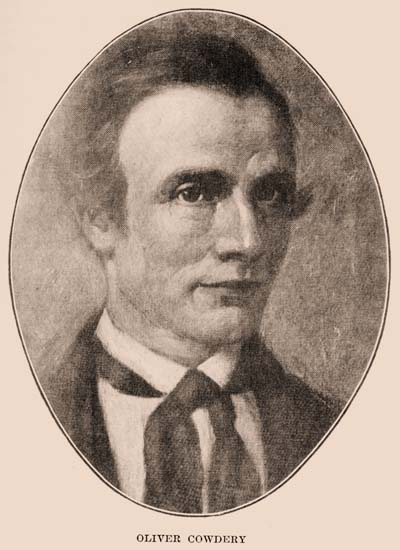
in 1884, of the Three Witnesses of the Book of Mormon, published in 'The Contributor' of that year. It took at that time, a year and considerable diplomacy and expense, to secure this portrait from the original daguerreotype; and I believe but for it the likeness of this remarkable man would now be lost to the world."It is time that history did justice to Oliver Cowdery. For years he has occupied the peculiar position of receiving slurs and abuse from both sides. His whole course seems to us to be consistent, on the supposition that he was perfectly sincere in accepting the Book of Mormon as a revelation from God -- in believing what seems to most of us unbelievable. Instances of this kind are not rare in human history. To any one who will calmly and with an open mind weigh the known facts about Oliver Cowdery's life, the letters he has written, the work that he did and the way it was done, his unselfish devotion through years of trial and persecution, it can lead but to one result, that whatever the truth or falsity of Mormonism, Oliver Cowdery at least was a sincere, consistent and earnest believer in its everlasting truth.
A. E. COWDREY.
|

|
82 BENJAMIN FRANKLIN Cowdery (Jonathan,6 Jabez,5 Nathaniel,4 Samuel,3 Nathaniel,2 William1), b. May 26, 1790, at New Marlborough, Mass; m. 1st Nov. 24, 1819, at Moscow, Livingston Co., N. Y., to Amanda Muuger, b. July 29, 1799, at Fair Haven, Vt.; d. Apr. 2. 1842, of consumption, at Oberlin, Ohio; dau. of Deacon Asahiel and Lydia (Warren) Munger; m. 2nd at Rochester, N. Y., to Sarah B. Wolcott. Mr. Cowdery d. May 26, 1867, at Rochester, N. Y., of pneumonia. He was a printer and editor. Children of Benjamin Franklin and Amanda: i Mary b. Apr. 2, 1821, at Angelica, N. Y.; d. July 1, 1823, of scarlet fever at Lockport, N. Y. 188 ii Sarah, b. Dec. 9. 1822, at Angelica, N. Y. iii Lucy, b. Apr. 8, 1825, at Albion, Orleans Co., N. Y.; m. James A. Noyes; she d. Dec. 24, 1854. of consumption, at Rochester. N. Y. No children. She was a remarkably beautiful woman. Years after her death, a friend told her niece, Mary B. Alverson, that he first saw Mrs. Noyes as she was coming out of church in Rochester. N. Y. and she was so beautiful it seemed to him as if he had seen an angel. 189 iv Martha, b. Mch. 29, 1829, at Geneva. N. Y. 190 v Samuel Franklin, b. Nov. 13, 1831, at Rochester, N. Y. 191 vi Jabez Franklin, b. Aug. 11, 1834, at Rochester, N. Y. [195] Benjamin Franklin Cowdery was the eldest son of Dr. Jonathan Cowdery, a surgeon in the United States Navy when this nation first had what they called a Navy. When quite young he incurred his father's displeasure, when urged to be trained for his profession, by not only refusing to look for an M. D. to his name, but by leaving home rather promptly and going to a good, sober, solid man in Stockbridge, Mass., to whom he apprenticed himself to learn the art, trade and mystery of printing; that "art, preservative of all arts." Emerging from his minority with this trade, he launched out into life, taking with him, as his capital, his trade, and a fair young companion who was one of those "helpmeets" which we read about now-a-days. The first trial in this profession was in Angelica, Alleghany Co., N. Y., where, about 1819, he started the first newspaper; amid a population that, if his patronage had included every man, woman and child, with the added native population of bears, deer and other animals in that wildest of all wild regions of Western New York at that day, would not have afforded him a living, even if all had been "paying subscribers" in the pay of that day, which was everything but money, when it was anything at all. His stay here was short, for we find in Follet's "History of the Press of Western New York," that Mr. Cowdery printed the first paper in Cattaraugus County about the year 1823, a change of base which shows that "he jumped out of the frying pan into the fire." Later he started the Ontario Chronicle at Geneva, N. Y., where he was mainly obliged to be his own editor, type-setter, pressman, "devil" and all, none of his profession looking to such a wilderness for a "job." Here occurred an incident which showed his need, and the value of his "help-meet." Going at one time to his wife, a day or two before the stated publication of the Chronicle, he said to her that his apprentice had gone and he saw no way of getting up the type for the next issue in time. His wife replied that but for the little one [196] (Sarah), who could not be left behind, she could hold out the "form," for she had learned to set type. This difficulty was overcome, for the next day at the "office" the father was seen working at his "case," standing on one foot and rocking the cradle with the other, his good wife plying her nimble fingers at the case adjoining. That day and all night brought the Chronicle out in time, and the "carrier-boy" was the editor and publisher. The same history before referred to says, "B. F. Cowdery published in 1823 the 'Newport Patriot' at Newport (now Albion), Orleans County, continuing it nearly two years; and in 1847 he printed a semi-monthly literary paper in Rochester called the 'Genesee Olio.' At the time of the early revivals in Rochester, under Charles Finney, Mr. Cowdery and his excellent wife did great service in the Brick Church. Shortly after this period, they left for Constantine, Michigan, where Mr. Cowdery was an elder in the Presbyterian Church. Ague and fever, that scourge of all new countries, drove this family to Oberlin, Ohio, where Mr. Cowdery was publisher of the Oberlin Evangelist for a number of years, during which time he lost the wife of his youth, his great help, comfort and solace in his early struggles. In 1842 he returned to Rochester, working on the 'American,' and later in the 'Democrat' office, until he died May 26, 1867, aged seventy-seven years. He was a cheerful, unassuming, honest Christian man and left to his sons, one of whom is a prominent lawyer in San Francisco, California, and to his two daughters -- excellent women who settled in Ontario county, -- a precious legacy, -- a good name; which, though not highly valued by 'money changers' is yet 'rather to be chosen than great riches.' As the father of Mr. Cowdery, at his death, years ago, was the oldest officer as well as surgeon in the United States Navy, so his son, B. F. Cowdery, was the oldest practical printer in the United States at the time of his death. Mr. and Mrs. Cowdery were ardent workers in the Anti-Slavery and Temperance Causes. During a protracted illness of [197] eighteen months, Mrs. Cowdery several times gave the church in writing, her joyful testimony to the faithfulness and loving kindness of her God and Saviour. Her last message, dictated a short time before her death, besought the church to abide in Christ, and assured them that there is such a thing as living above the world while we live in it. Of this she was, both living and dying, a bright example. Note 1: Vanick and Cowdrey, in their 2005 book The Spalding Enigma, provide the following information on Franklin Cowdery: "...there is no direct evidence that Oliver was at Geneva with Franklin, and only one piece of indirect evidence. In her Cowdery Genealogy, Franklin's granddaughter, Mary Mehling, recounts a story undoubtedly told by her mother Sarah. According to her, Franklin "started the Ontario Chronicle at Geneva, N.Y., where he was mainly obliged to be his own editor, typesetter, pressman, 'devil' and all, none of his profession looking to such a wilderness for a job...." -- Later, he gained an unnamed apprentice or "help-meet" who remained for a time and then suddenly ran off, leaving Franklin in a dilemma as to how to get his paper out on time. In Mary Mehling's words: Here [at Geneva] occurred an incident which showed his need, and the value of his "helpmeet." Going at one time to his wife a day or two before the stated publication of the Chronicle, he said to her that his apprentice had gone and he saw no way of getting up the type for the next issue in time. His wife replied that but for the little one (Sarah), who could not be left behind, she could hold out the "form," for she had learned to set type. This difficulty was overcome, for the next day at the "office" the father was seen working at his "case," standing on one foot and rocking the cradle with the other, his good wife plying her nimble fingers at the case adjoining. That day and all night brought the Chronicle out in time.... -- While it is possible that Oliver was the apprentice whose sudden departure caused the inconvenience described above, the story is unfortunately flawed because Mehling incorrectly identifies the 'little one' in question as having been her mother, Sarah, who had surely outgrown a cradle by 1828 as she turned 5 years old in January of that year. Assuming the incident occurred in 1828, the child must have been Lucy, who was about 3. If, however, it occurred in 1829 or 1830, then the child would have been Martha, who was born at Geneva on March 29, 1829. Moreover, Oliver is a candidate for the apprentice in question only if the event took place before autumn 1828, because after that his whereabouts are reasonably well known." (pp. 298-99) Note 2: While it is intriguing to imagine Oliver Cowdery working as his cousin's apprentice in the Ontario Chronicle printing shop at Geneva, it appears that Franklin's run-away helper episode occurred in the spring of 1829, a year after he began publishing the Chronicle. His helper the difficulties were soon resolved, when Franklin hired Bushrod W. Woodruff (1806-1893) of Livingston County. In a letter published in the Geneva Advertiser of Feb. 3, 1885, Woodruff mentioned that he came to Geneva "in 1829, and worked on Seneca street for Mr. Cowdery." Woodruff served his apprenticeship with Chauncy Morse, on the Livingston Journal at Geneseo, beginning in 1821, and by 1829 he was evidently a journeyman printer. After leaving Franklin Cowdery's employ (in 1830 or 1831), Woodruff returned to Geneseo to print the Journal, in association with Henry F. Evans. An early 1829 date for Franklin's absent printer's helper would indicate that his babe-in-arms was not "Sarah," but rather her younger sister Martha -- the future aunt of amateur genealogist Mary B. Alverson. Franklin Cowdery arrived in Geneva in February of 1828 to start up the Ontario Chronicle. After that paper's demise in the fall of 1830, he spent a few months working for the Rochester Daily Advertiser, before moving on to establish the Orleans Mercury in 1832. Thus, if Oliver Cowdery had any employment at Franklin's Geneva Chronicle, it necessarily would have been during the first part of the year 1828, before he took up his position as a school teacher in nearby Manchester. For speculation on Oliver's earlier association with his cousin Franklin, see notes appended to "Look Here," in the Newport Patriot of Nov. 26, 1824. |
Return to The Oliver Cowdery Home Page: (Introduction)
